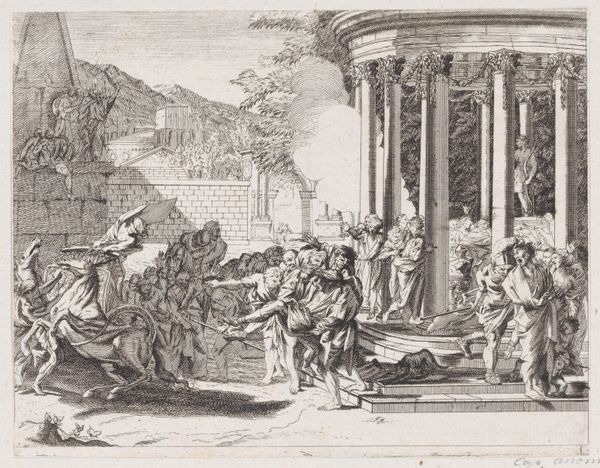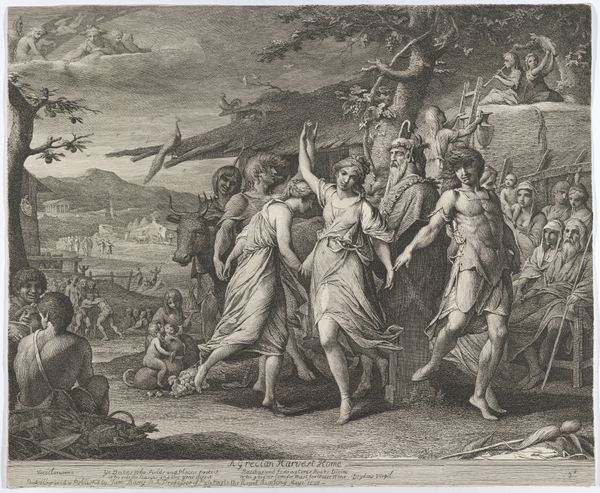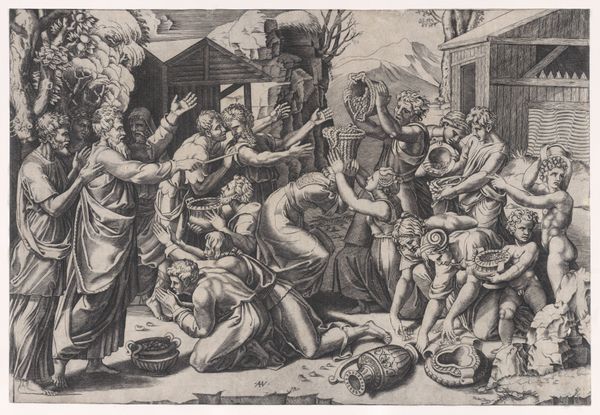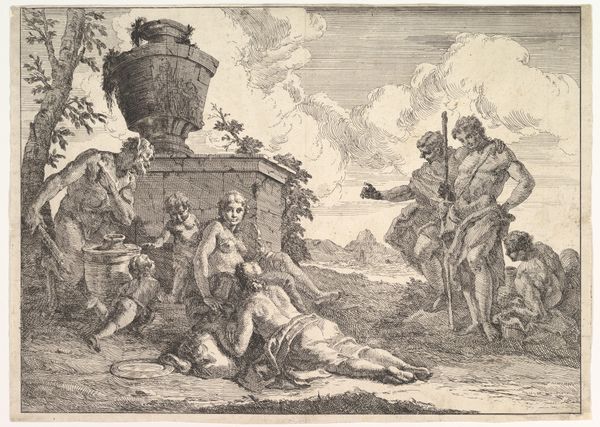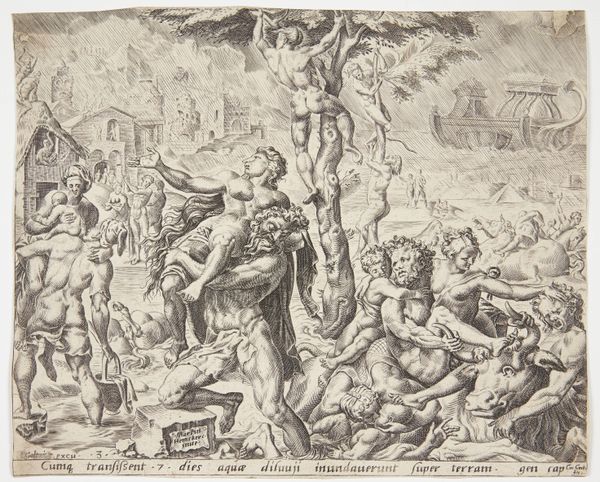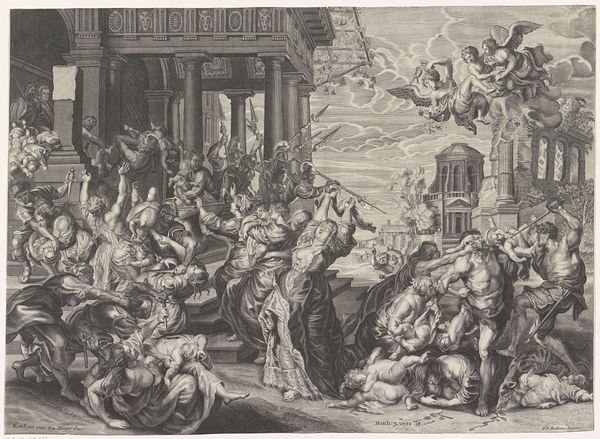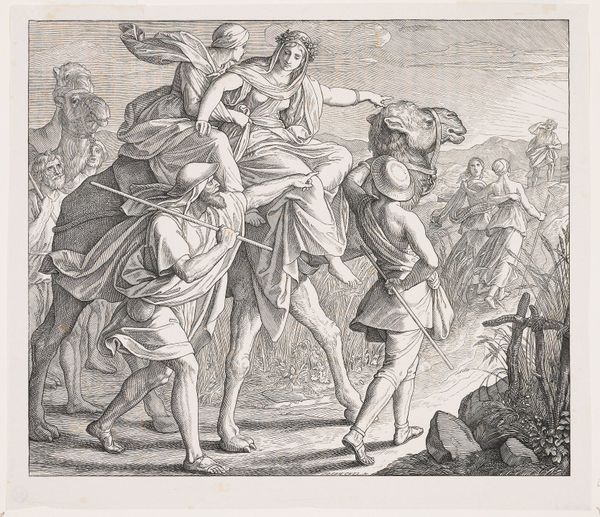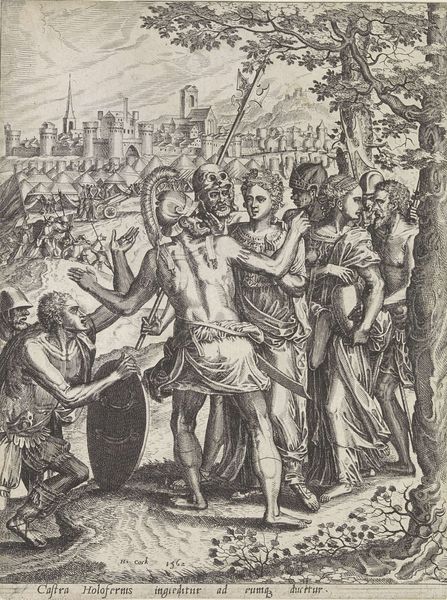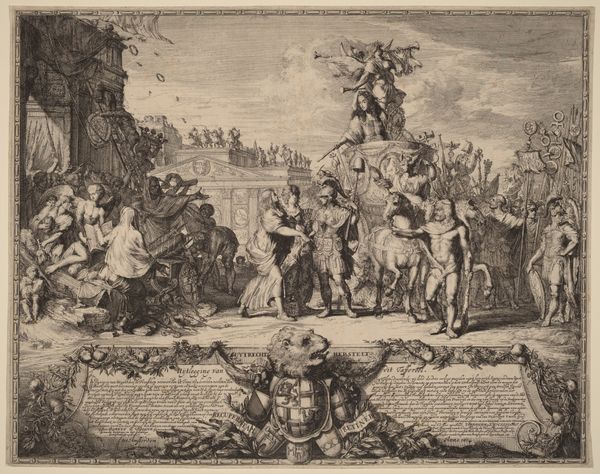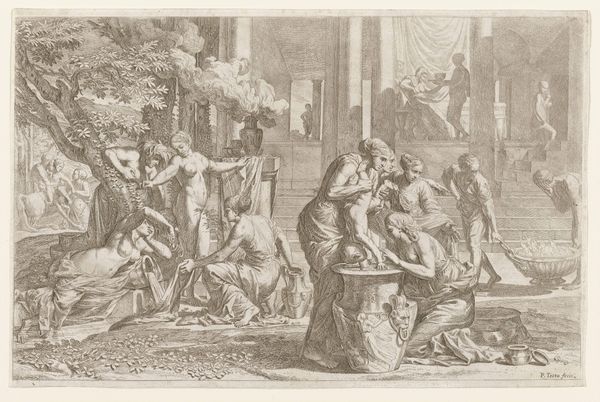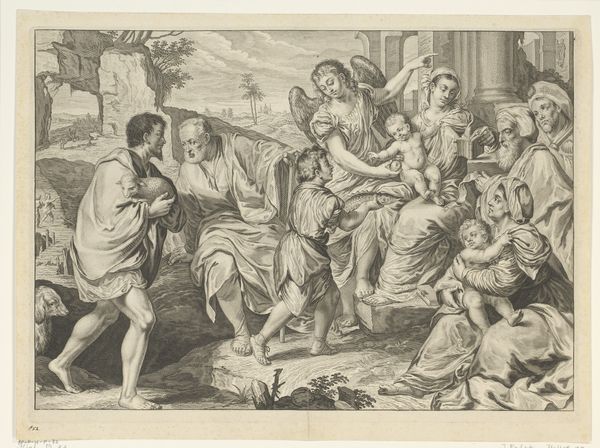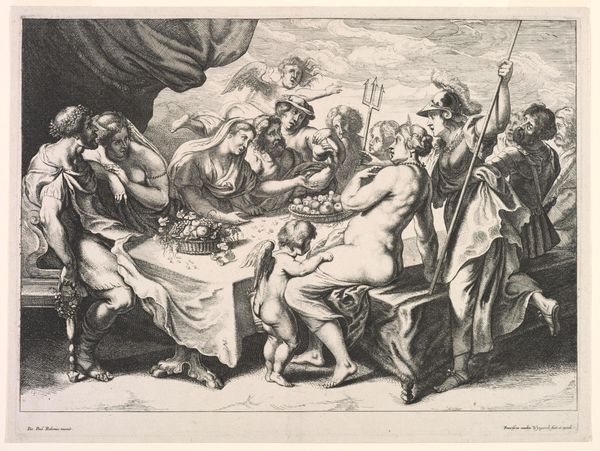
drawing, print, ink, engraving
#
drawing
#
allegory
#
baroque
# print
#
french
#
landscape
#
ink
#
ancient-mediterranean
#
history-painting
#
engraving
Copyright: Public Domain
Curator: Bernard Picart's "The Gods of Egypt," created in 1718, offers us a fascinating glimpse into early eighteenth-century European understandings of ancient Egyptian religion. The etching combines ink and engraving techniques to create a densely populated scene. Editor: It strikes me as… frenetic. All these figures crammed into the foreground, and that jagged mountain in the back! The tonal range feels limited too, a narrow band of grays. Was this reproduced often? Curator: It was originally produced as a drawing, before being translated into a print intended for wider distribution. The print medium itself speaks volumes. Picart's intent wasn't to create a singular precious object, but rather to disseminate information, or perhaps, a perspective on ancient Egyptian belief to a broader public, wouldn’t you say? This artwork exists as part of a book illustrating different religions. Editor: Ah, context is everything! The mass-produced nature positions it as a commodity, a cultural artifact intended for consumption by European audiences eager to learn about—or exoticize—ancient cultures. You see a blend of artistic labor – the artist's skill – with the commercial machinery of printmaking and its implied marketplace. Who would buy it? How much did it cost? Those things shape the impact. Curator: Absolutely. Think about how ancient Egypt was perceived then – it was a source of mystery and philosophical interest for European thinkers. Note the presence of figures clearly modeled on Greco-Roman ideals right alongside instantly recognizable Egyptian symbols: obelisks, pyramids. Picart isn't attempting a faithful reproduction, but rather, he is creating a new synthesis of Egyptian elements re-interpreted through a baroque, almost theatrical European lens. Editor: I see that Baroque sensibility in the swirling composition, and, of course, that busy texture achieved through those engraving lines. And it is certainly not unbiased. We get the sense of a civilization categorized and put on display. Look, even a rat is standing on a plinth observing all. The use of a reproducible medium to document religion raises some crucial questions about dissemination of information versus knowledge, cultural appropriation, and what it is used to represent and understand foreign people and society. Curator: So true, so much for one to absorb, even from what might seem like a rather unremarkable piece. Editor: Well, "unremarkable" maybe too dismissive, I’m thankful for it shedding some light on the commercial appetite to visualize foreign civilization.
Comments
No comments
Be the first to comment and join the conversation on the ultimate creative platform.
